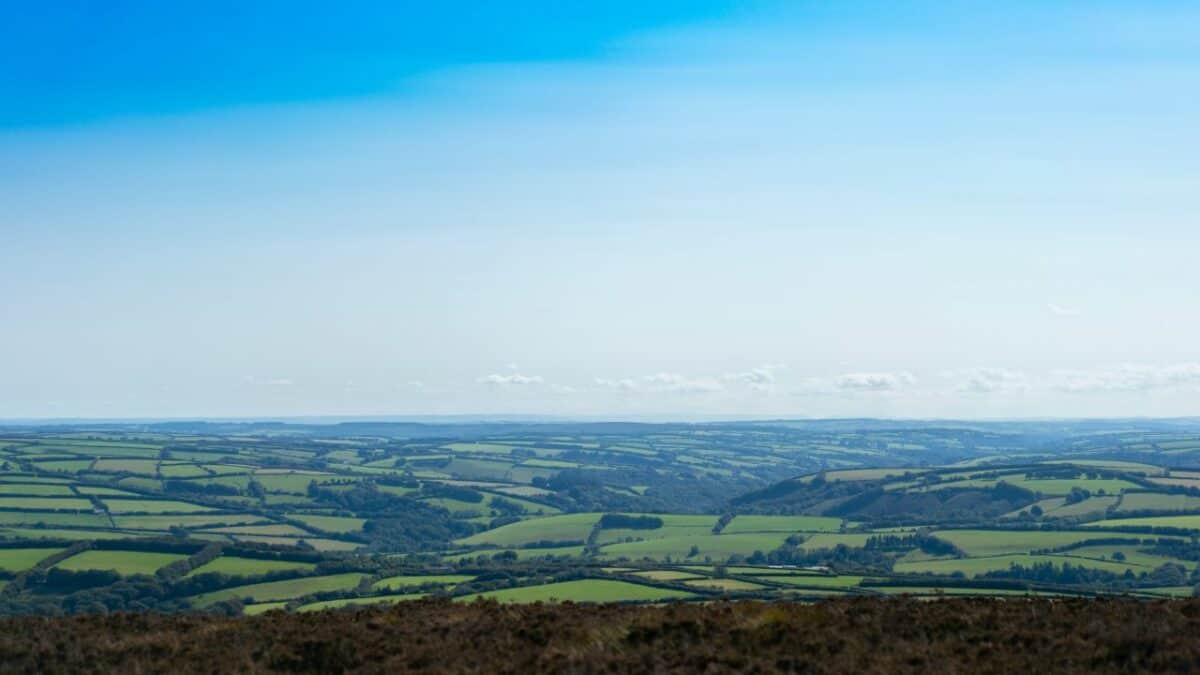With its seaside hills reaching over 400 metres high, the Exmoor National Park has the highest coastline in mainland Britain. However, that’s not the only thing that makes Exmoor a must-visit outdoor destination – the park also features a vast, untamed land brimming with rocky beaches, velvety heather fields, towering cliffs, and ancient forests.
As such, it’s an ideal setting for anyone in love with nature. Here’s everything you need to know about wild camping in Exmoor National Park and the best campsites.
Is Wild Camping Legal in Exmoor?
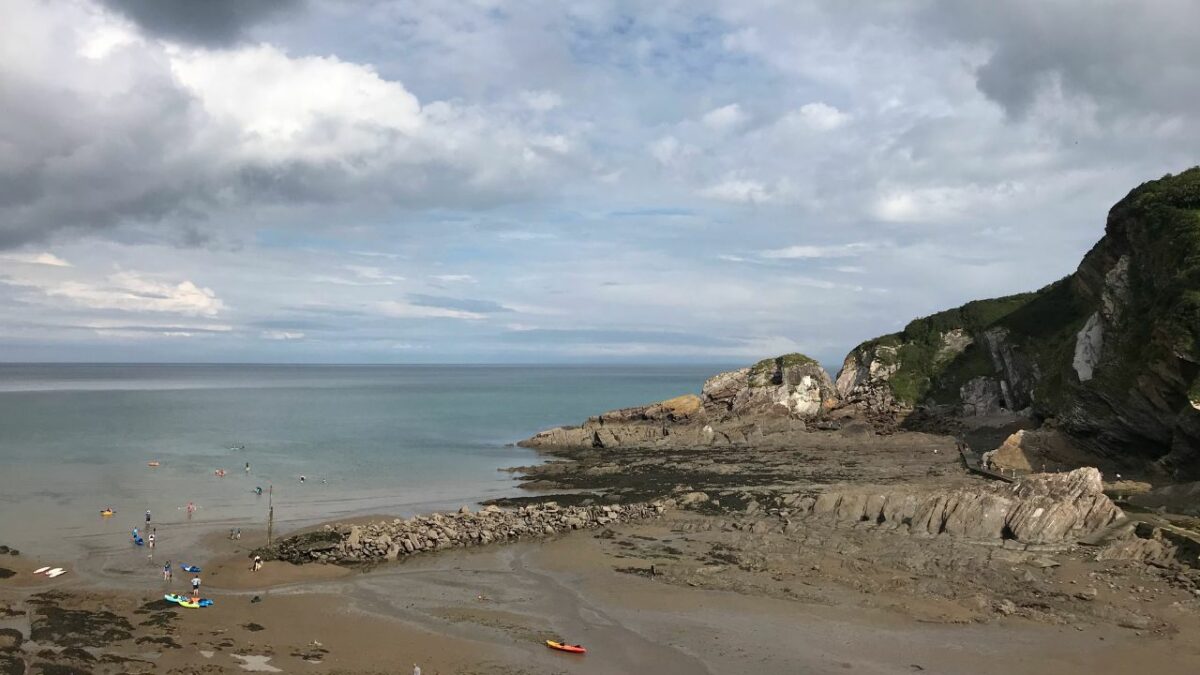
Like elsewhere in England (except for some parts of Dartmoor), wild camping in Exmoor is legal only with the landowner’s permission. However, that is often easier said than done, and to make things worse, most of the park’s land is privately owned. For this reason, I’ll focus on road laybys in this article.
Road laybys – or “pull-offs” – are small roadside areas where you can park your vehicle and spend the night. They can be found everywhere throughout Exmoor, and I tried to include only those close to some of the park’s loveliest natural wonders. Remember that wild camping in an off-grid motorhome is still wild camping.
Once you park your vehicle at a layby, you can use it as a base for exploring the surrounding wilderness. If you really want to pitch your tent somewhere, bring it along and remember to try to obtain the landowner’s permission, set up camp far from roads and buildings, and stay for one night only. However, wild camping without explicit permission is generally tolerated in Exmoor – as long as you are not a nuisance to anyone.
Map of Wild Camping Areas in Exmoor
You can easily find the locations of the best dispersed campsites in the national park using this map.
Best Wild Camping in the Exmoor National Park
Robber’s Bridge
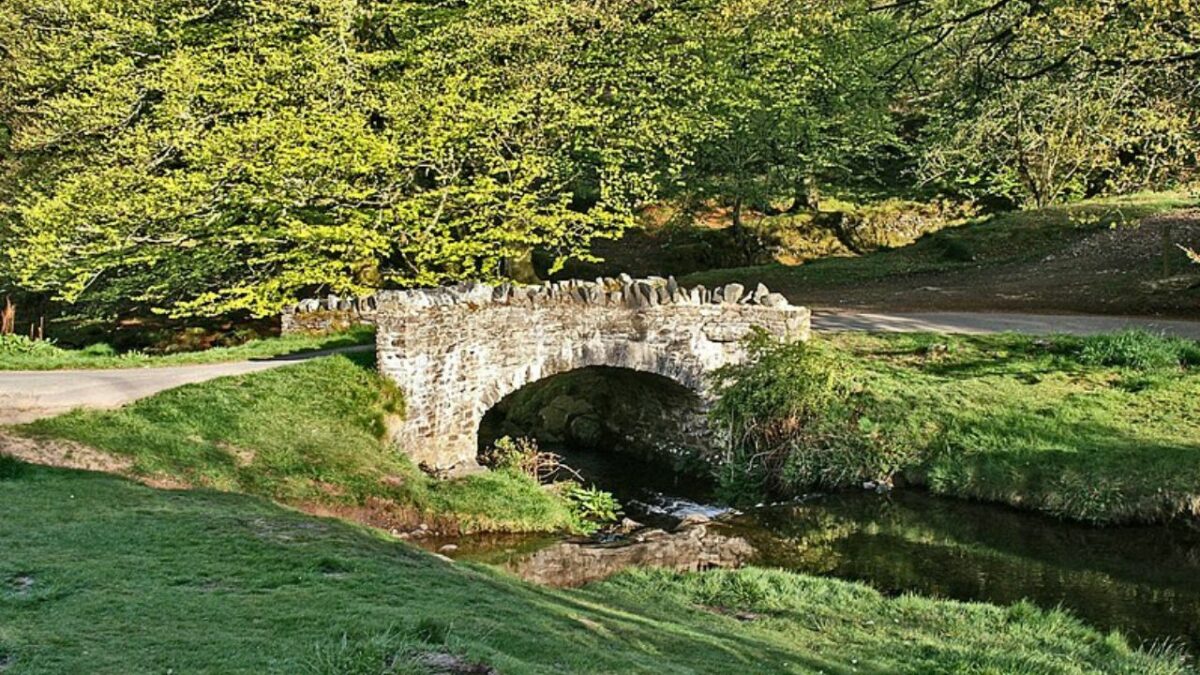
The first place on my list of the best wild camping spots in Exmoor is in the north-central part of the National Park, 10 miles west of Minehead and less than 2 miles south of the coast. It’s a layby on a minor route known as Hookway Hill, which connects the village of Oare with Road A39 and Porlock.
The layby is only a few minutes walk from an old masonry bridge called Robber’s Bridge on Weir Water. The bridge got its name after the area’s former reputation as a bandit country (hundreds of years ago – nothing to worry about now). Lorna Doone, an iconic novel written by R.D. Blackmore, was inspired by the legends and history of this region.
Nature lovers who know a thing or two about Exmoor consider this area an excellent picnic destination – Robber’s Bridge provides access to a grassland that’s just tailor-made for relaxing in the sun. There is also a superb riverside walk upstream from the bridge.
A historical attraction worth seeing while in the area is the 15th-century Church of The Blessed Virgin Mary in the village of Oare. To get to Oare, drive west from the bridge (1.5 miles, a 5-minute drive).
Of course, if you’re keen to explore more of England’s enchanting wilderness, consider the rugged beauty of Yorkshire as another enticing alternative. With its sprawling moors, rolling hills, and idyllic valleys, wild camping in Yorkshire offers a delightful fusion of adventure and serenity that’s hard to resist. Discover for yourself why Yorkshire is known as “God’s Own Country.”
Dane’s Brook
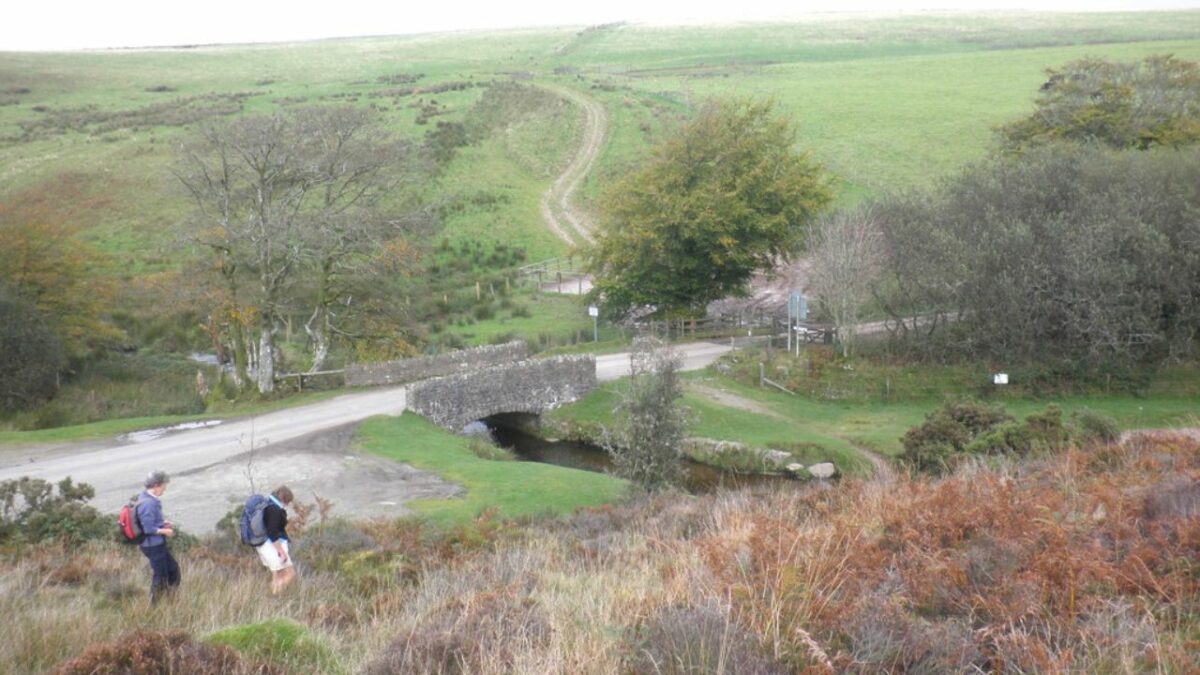
The next wild camping spot is yet another road lybay next to a bridge, only this time in south-central Exmoor National Park. It can be accessed from a few different directions (depending on the manner of your exploration of Exmoor), but it’s worth pointing out that it’s about 10 miles from the largest nearby settlement – the town of South Molton.
The lybay in question is right next to the Lower Willingford Bridge, one of three bridges crossing the brook. On the other hand, the creek is narrow and slow-flowing, with grassy banks that allow easy upstream and downstream exploration.
The layby will be to your right, just before the bridge when coming from the west. It is flat, spacious, and even has some shade in the morning hours. Interestingly, those staying here for the night will do so right at the border between Devon and Somerset.
The village of Whitypool and its famous Royal Oak Inn is less than three miles northeast, so make sure to visit it. This 300-year-old pub serves some of the best food and drinks in the entire region – an excellent opportunity to add some flavour to your Exmoor wild camping adventure.
If, however, the southwest isn’t within your reach, the diverse landscapes of North Norfolk provide an equally enriching wild camping experience. Nestled between serene marshlands and golden beaches, wild camping spots in Norfolk offer peaceful seclusion under starlit skies. Plus, the traditional pubs and eateries scattered around North Norfolk’s charming villages like Burnham Market can easily rival the gastronomic delights of the Royal Oak Inn.
Dunster
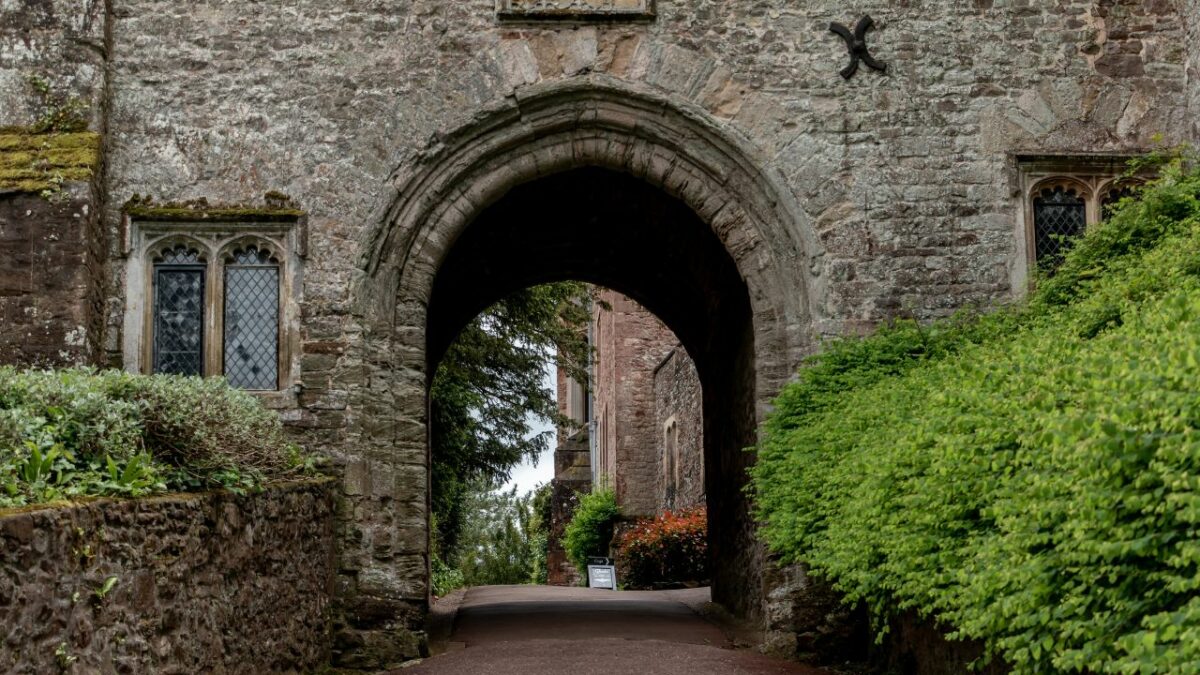
Lying on the Bristol Channel less than 3 miles southwest of Minehead, Dunster is among the best-conserved medieval villages in England. It’s a delight to stroll around – the place is brimming with picturesque streets lined with restaurants and shops. Moreover, it is surrounded by delightful Exmoor hills begging to be explored.
One of the best places to park your campervan can be found just southwest of the village. There is a small layby at the beginning of Knowle Lane, which runs parallel to Road A396 and connects Dunster with the tiny hamlet of Knowle and its impressive manor.
The layby lies on the slightly slopped ground next to a small creek that flows into River Avill. While not particularly quiet due to its proximity to A396, the place is well-shaded and surrounded by lush vegetation on all sides. A small path opposite the layby leads into the woodland west of Dunster.
From the layby, you can take many scenic walks in all directions. I recommend hiking south to see the iron-age heritage at Bat’s Castle (a large hill with stunning views of Exmoor’s hills) and Douglas Fir, the tallest tree in England. Or, hike north through Dunster to check out the impressive Conygar Tower and the beautiful beach overlooking the Bristol Channel.
Countisbury
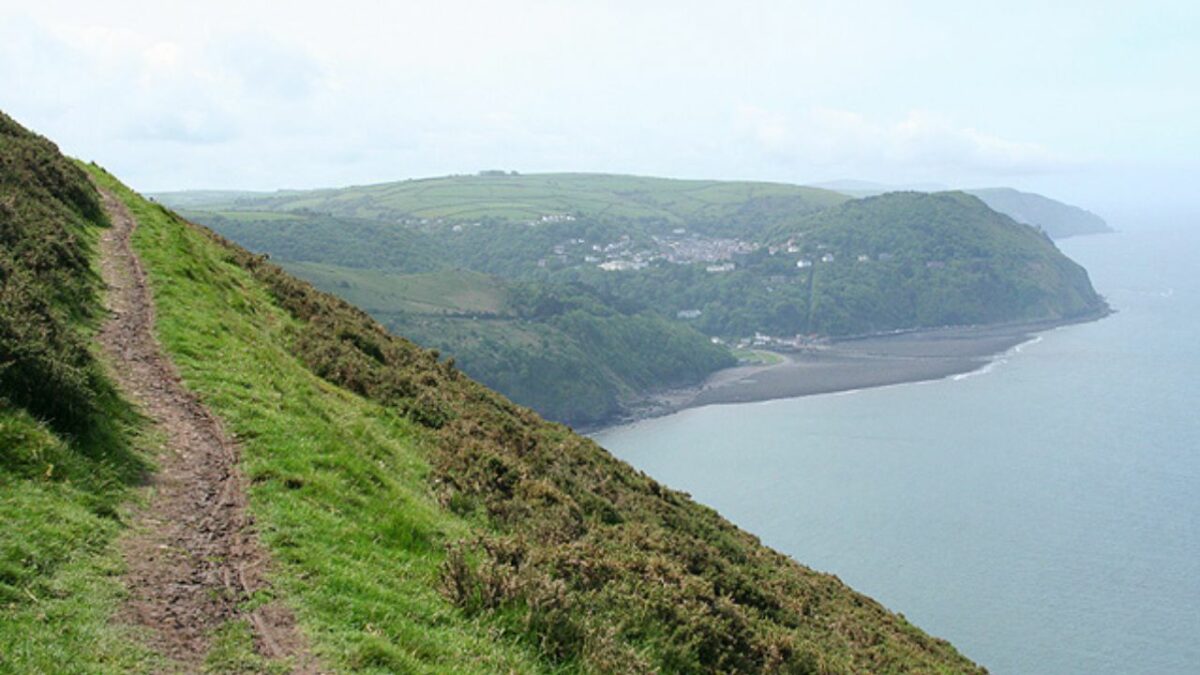
If you’re seeking a wild camping spot with great views, look no further than the one just east of the village of Countisbury. A rest stop, just off A39 halfway between Countisbury and Kipscombe Cottage, overlooks the Bristol Channel to the north and the Exmoor hills and woods to the south.
Besides its unforgettable views, the pull-off is spacious and can accommodate several motorhomes at once. Moreover, it continues further north as two separate roads, both of which can take you to the coast and the Lighthouse Keepers Cottage, one of the most interesting-looking buildings in all of Exmoor.
This is an excellent base for exploring the northern coast of Devon and Somerset. To the west, you’ll have the picture-perfect twin villages of Lynmoth and Lynton and their attractions, eateries, and pubs. To the east, you will have miles of rugged coastline brimming with breathtaking sea views, stretching from Countisbury to Porlock.
Another thing worth mentioning is that there’s another road layby just to the west, with an even more spectacular view of the Bristol Channel. However, it is less spacious than the one described above.
Martinhoe
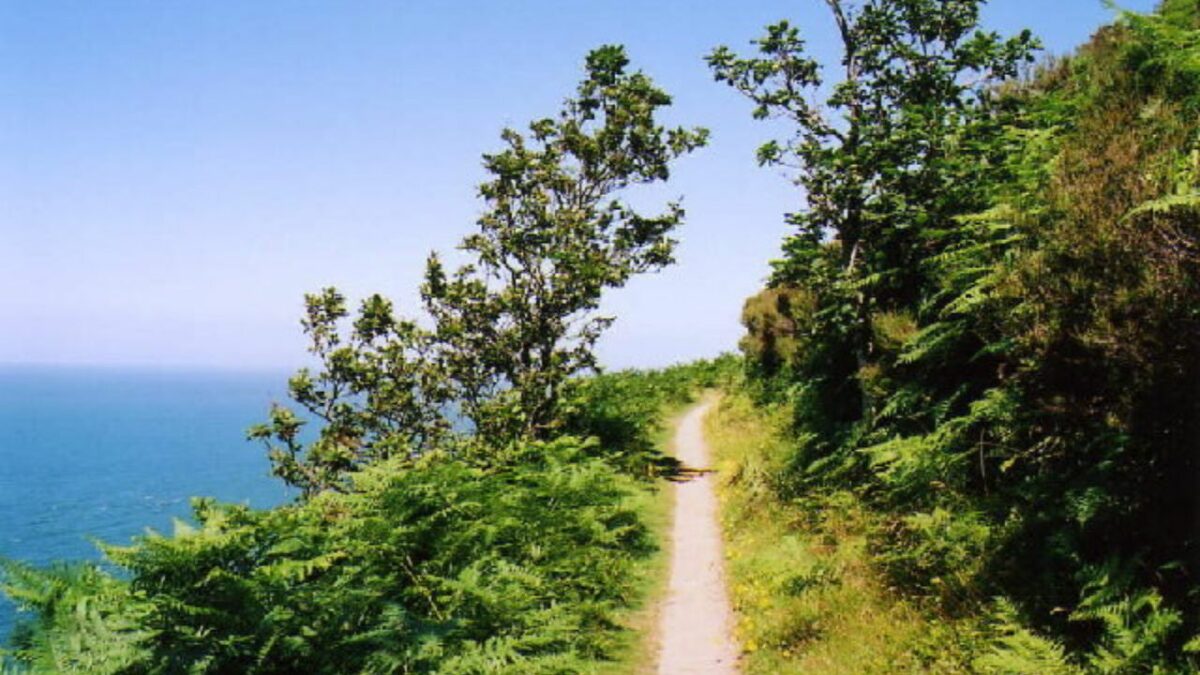
The next Exmoor wild camping spot is west of the twin villages of Lynmoth and Lynton, close to a small settlement called Martinhoe. It’s close to the coast (less than a mile from the National-preserved cove of Heddon’s Mouth) and surrounded by the rolling Exmoor countryside and forested hills on all sides.
Unlike some road pull-offs described above, this one is grassy and as flat as it gets. It can easily accommodate more than one car, so you should be fine parking your campervan here. Bushes enclose the layby, but there’s a small wooden gate at its far end, over which you can see all the way north to Woody Bay.
While it’s true that most of the surrounding land is privately owned, there’s an abundance of footpaths to walk and natural wonders to discover. The Heddon’s Mouth, which I’ve mentioned above, is one of the most isolated places in Exmoor. In fact, this rocky cove is so remote that, during the Second World War, a German U-Boat crew used the opportunity to relax on its beach without being detected.
Other natural wonders worth seeing in the area include the Valley of Rocks 2 miles to the east, and Sandy Beach 7 miles to the west. The Valley of Rocks is well-known for its jagged cliff edges and spectacular sea views. On the other hand, Sandy Beach is one of Exmoor’s most gorgeous beaches and an excellent place to relax in the sun.
Horner Wood
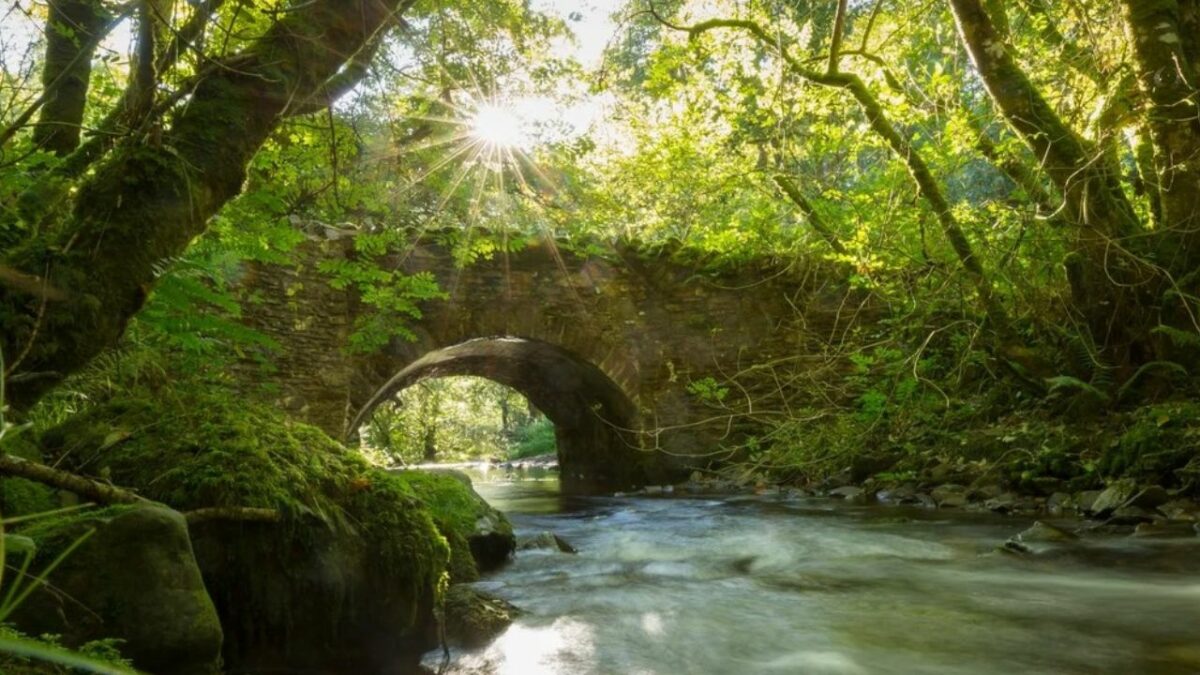
This wild camping spot is ideal for exploring the Dunkery & Horner Woods National Nature Reserve in north-central Exmoor. To reach it from Porlock, drive south through Doverhay and take a right just before reaching Burrowhayes Farm (you’ll see a “Pool Bridge” signpost at the spot where you need to turn right).
Follow the road further south, cross the River Hornet, and you’ll see the layby on your right. It is very spacious (easily accommodating about ten cars or campervans at once) and located next to a path that leads down the hill to Nutscale Reservoir.
Those who come here will be surrounded by miles of steeply sloping combe sides with bracken and grassland – the region is an internationally important dry and wet heathland. However, the main thing to see here is Horner Wood, which will be to your east.
One of the most extensive and enchanting wild camping areas in the UK, Horner Wood looks like something out of a dream. The atmosphere is magical: the fern-covered ground is interspersed with peaceful creeks and shrouded by genuinely ancient trees, some of which are 500 years old. Make sure to bring your camera!
Twitchen
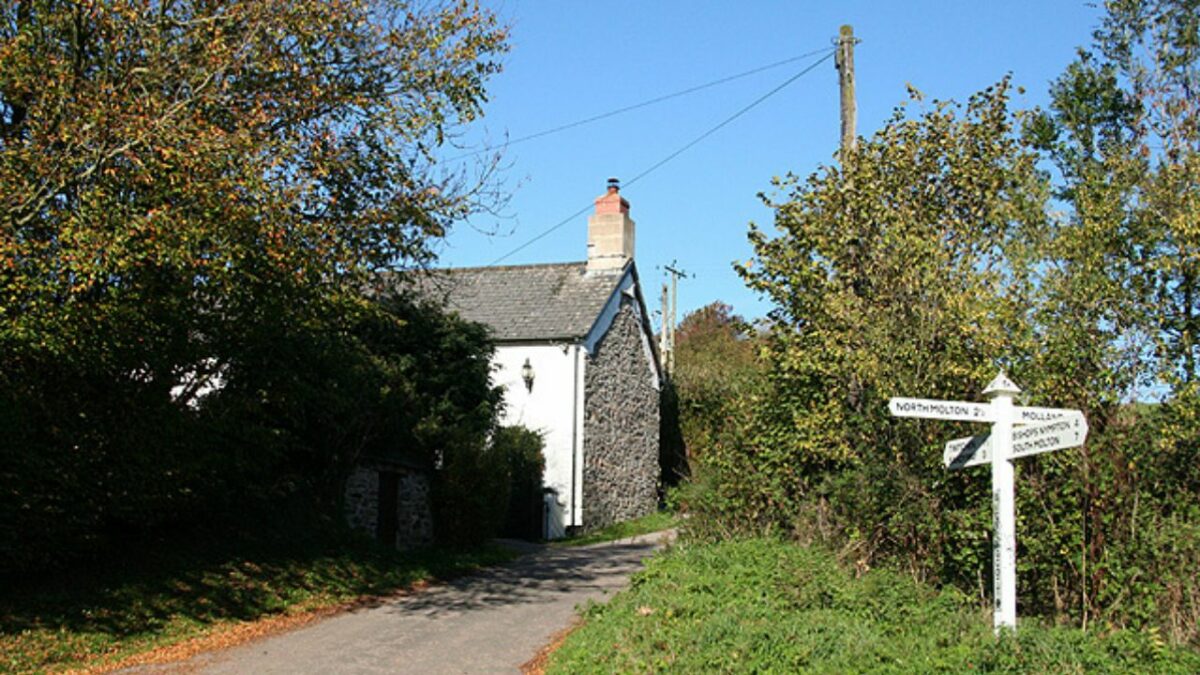
Although less picturesque than some of the other wild camping spots in this article, this one is a good option for folks looking to explore southern Exmoor and northern Devon in general. It is located on the very edge of Exmoor National Park, where Sandclose Lane connects with the road that marks the park’s southern border.
You can park your car/campervan in a grassy area next to a tall hedge on the right side of the road (when coming from the east). You’ll have rolling hills and lush Devon countryside in all four directions – plenty of opportunities for exploration.
The hamlet of Twitchen and its ancient church of St Peter will be to your west (less than a mile away). In the village of Molland – to your southeast – make sure to visit the traditional 16th-century pub called the London Inn and the antique shop called the Wizard Winders.
If you’d rather go north into the National Park, check out Landacre Bridge, which crosses River Barle 5 miles north of your camping spot. The shallow, stony river bed beneath the bridge makes it an ideal place to cool during the warmer months. You can also do some paddling here.
Ridge Road
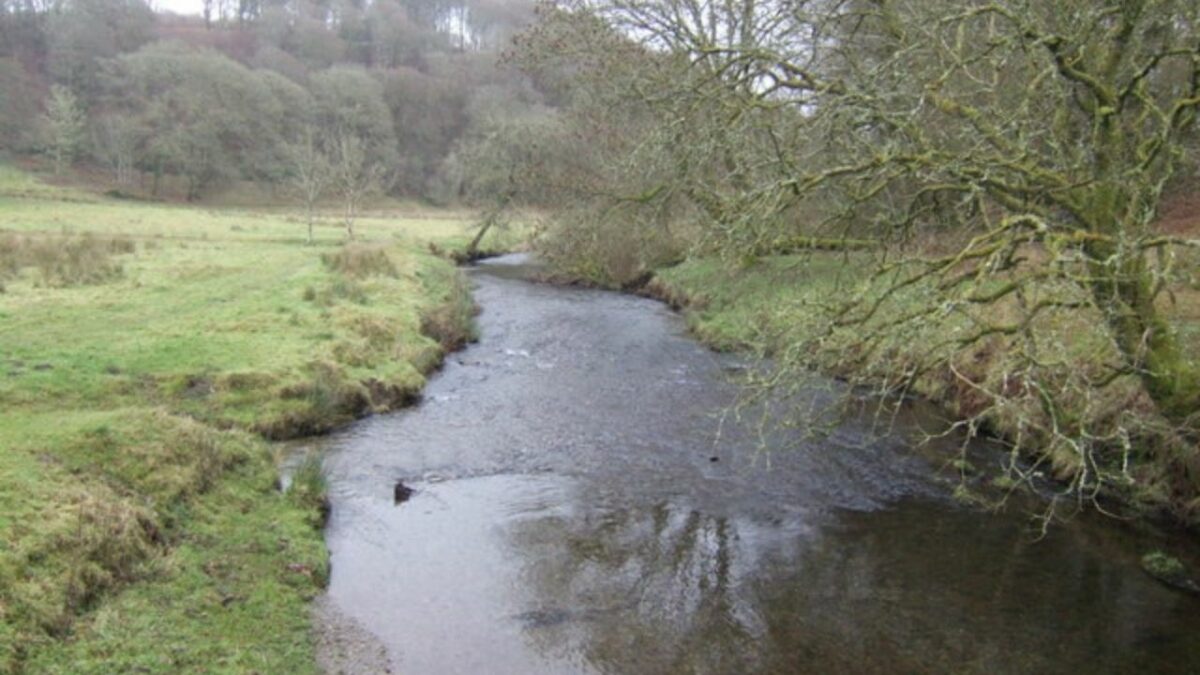
The next road layby is relatively close – and quite similar – to the one described above. It is situated in the southern section of Exmoor, close to where the Ridge Road connects with another route that leads further north into the National Park. As with other wild camping spots on this list, this is also a (small-ish) road layby.
There’s little to say about the layby itself. When coming from the east, it will be on your left-hand side and can accommodate only a single vehicle. However, the view to the south is nothing short of breathtaking: you can see the idyllic countryside of central Devon in all its splendour. You will see little to the north, though – there’s an upland area that you need to cross on foot.
Some places worth seeing in this part of the park include the Exmoor Pony Centre and the gorgeous woodland that follows River Barle. Both of these will be northeast of your wild camping spot. Another option is visiting the small market town of Dulverton (4 miles east).
Located on the banks of the River Barle, this delightful little town features picturesque streets lined with restaurants, pubs, tea rooms, and independent shops. The Dulverton Heritage Centre deserves a special mention – its model railway village alone is worth the price of admission.
If you’re ever in the mood for a change of scenery, wild campsites near Avon are a fantastic alternative to consider. Just a short distance away, these campsites offer an enchanting blend of riverside tranquility and the undulating beauty of Dartmoor’s landscapes. As you listen to the gentle whispers of the River Avon at night, you’ll realize why so many campers are drawn to its banks. This pristine setting offers a unique contrast to the uplands of Exmoor, providing adventurers with diverse experiences in close proximity.
Williton
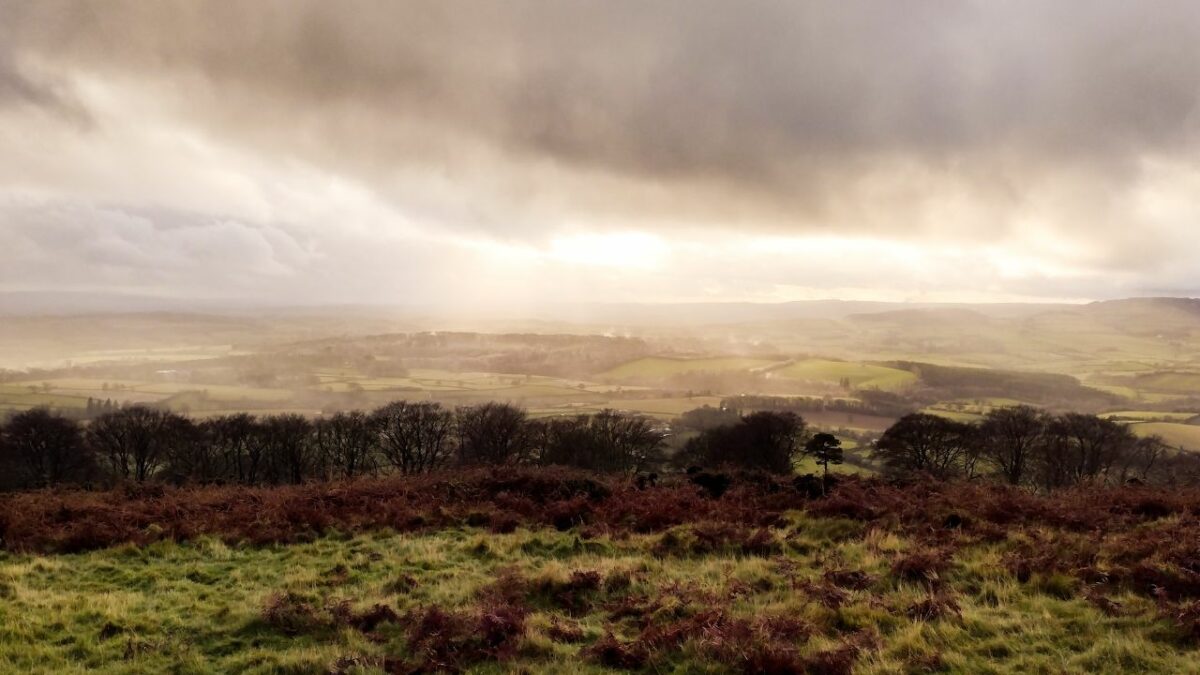
The last wild camping spot on my list isn’t technically in the Exmoor National Park. But since it’s located halfway between the park and the nearby Quantock Hills, it can serve as a good base for exploring both areas and some quaint villages between them.
The wild camping spot in question is yet another road pull-off right next to B3191 north of Williton. Not only is this place very roomy (it easily accommodates several cars/campervans at once), but also among the most picturesque on my list. You will have the rolling hills and quaint hamlets of Somerset on all four sides.
As I said above, you can easily access both the easternmost section of Exmoor and the Quantock Hills Area of Outstanding Natural Beauty from here. The latter region is just as breathtaking as its larger and more famous neighbour – expect undulating farmland, deep wooded combes, exposed heathland summits, and a rocky Jurassic coastline. It takes a 5-minute drive to get to Quantock from the spot marked on the map, and the same is true for Exmoor.
The attractive villages between Exmoor and Quantock are well-worth exploring too. The town of Watchet, a mile north, is a must-visit. Things worth seeing in this charming little coastal town include the marina, St. Decumens Church & Holy Well, the Hellwell Bay fossil beach, the steam railway, the Watchet War Memorial, and all three of the town’s museums.
Where to Next?
Those seeking true wild camping freedom don’t need to go far from Exmoor – the Dartmoor National Park and its purple heather-clad moors and granite tors are only 20 miles to the south.
To learn more about this breathtaking region and its best tent-pitching spots, check out my ultimate guide to wild camping in the Dartmoor National Park.

I love hiking, backpacking, and camping. From the Camino de Santiago to the West Highland Way in Scotland or simply a great day hike on the weekend. Hiking refreshes me, my mind, and keeps my body reasonably fit. So far I have walked three Camino routes and many other long distance hikes in the UK, Canada, and around the rest of Europe. One of the best was my hike up Ben Nevis.

